Birch trees, belonging to the genus Betula, are admired for their elegant forms, striking bark, and vibrant foliage that transforms with the seasons. Found in diverse habitats across the Northern Hemisphere, these deciduous trees play a vital role in various ecosystems and are cherished in landscaping for their aesthetic appeal and ecological benefits.
In this guide, we will explore 18 distinct types of birch trees, providing detailed identification features, including leaf shapes and colors, along with accompanying pictures.
Different Types of Birch Trees
Yellow Birch

Yellow Birch (Betula alleghaniensis) is a slow-growing, long-lived tree that can reach ages of 150 to 300 years, making it one of the most durable birch species. It is named for its yellow-bronze bark, which peels in narrow horizontal strips, creating a visually striking appearance. As the tree ages, its bark becomes tan or yellowish-gray, maintaining its lustrous texture.
Valued for its hard, durable wood, Yellow Birch plays an important role in the North American lumber industry, particularly in furniture and flooring production. It thrives in moist, well-drained loamy soils, in full sun to partial shade. Wildlife, especially birds, are attracted to its fruits in the fall, making it ecologically significant.
This species is native to northeastern North America and grows in USDA Zones 3 to 7. It can reach heights of 50 to 100 feet, with a canopy spreading up to 60 feet, making it a key species in forests and natural landscapes.
Silver Birch
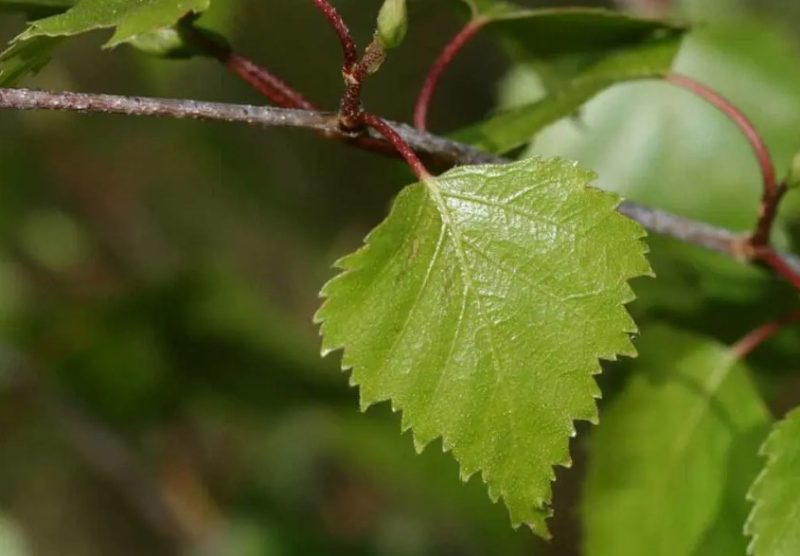
Silver Birch (Betula pendula) is a striking landscape tree, admired for its graceful, pendulous branches and distinctive white bark that peels to reveal diamond-shaped grooves. Native to Europe and parts of Asia, this tree has become popular worldwide for its aesthetic appeal. The bark, smooth and creamy white in youth, gradually exfoliates in thin horizontal strips, creating a beautiful contrast against the darker grooves as the tree matures.
Silver Birch thrives in full sun and prefers moist, well-drained sandy soils. It can grow as a single or multi-trunked tree, starting with a conical shape that becomes more rounded with age. Despite its beauty, this species has fallen out of favor due to its susceptibility to the bronze birch borer, a pest that severely impacts its health.
Silver Birch is typically 30 to 50 feet tall but can reach 80 feet. Its adaptability has led to invasiveness in some regions, such as parts of Canada and the U.S.
Bog Birch
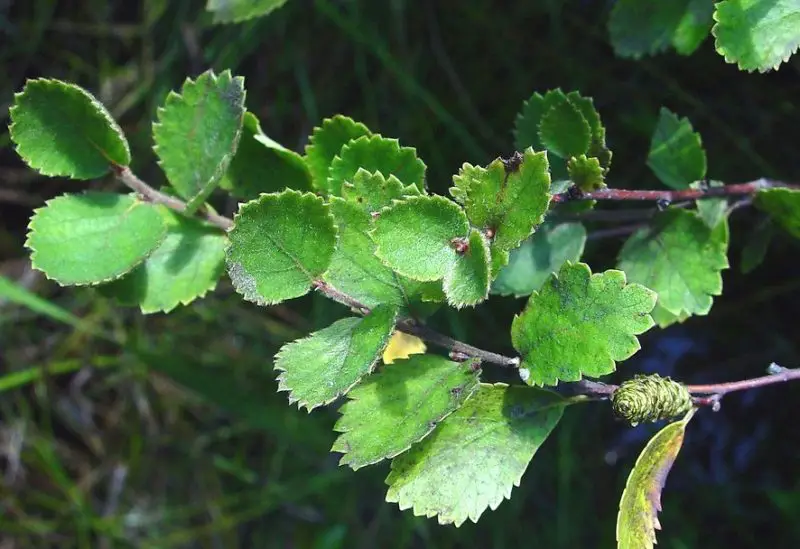
Bog Birch (Betula pumila) is a hardy, medium-sized shrub well-suited for wet, soggy soils near creeks, rivers, lakes, and bogs. It thrives in wet environments, making it ideal for rain gardens or landscaping around bodies of water. Its small, elliptical to almost rounded leaves add charm to its appearance.
This resilient shrub performs best in full sun and tolerates various tough conditions, including occasional flooding, alkaline soils, heavy clay, and road salts. It naturally grows in calcium-rich fens but faces threats from invasive species and human-altered water systems.
Bog Birch typically reaches 4 to 12 feet in height and has smooth, dark reddish-brown bark. Its twigs are hairless to somewhat pubescent, and its leaves are crenate or dentate with scattered resinous glands. This shrub is often confused with Dwarf Resin Birch and Dwarf Birch due to their similar features. Native to northern North America, Bog Birch is found across most Canadian provinces and northern US states.
Dwarf Birch
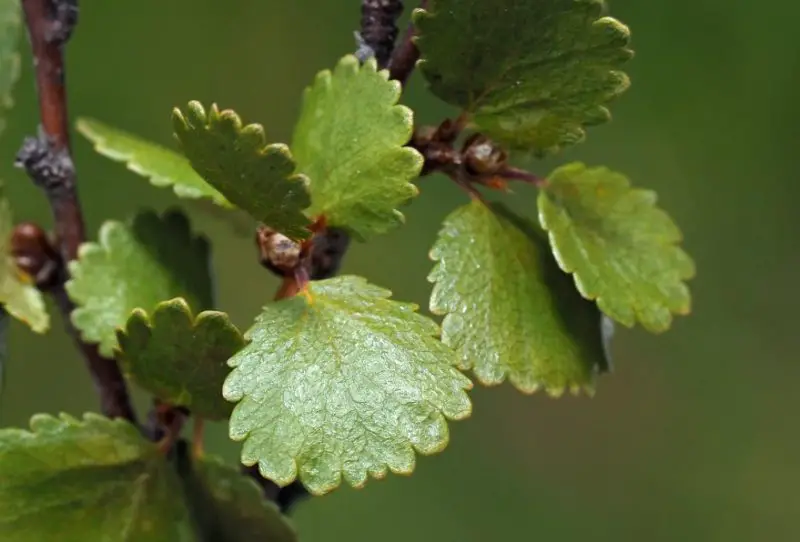
Dwarf Birch (Betula nana) is a small, cold-hardy shrub native to arctic and tundra regions across the northern hemisphere. Though not commonly found in home landscapes, it serves as an excellent ground cover in colder northern areas. Dwarf Birch is adaptable, tolerating various soil conditions, including poor, rocky, and acidic soils, but it thrives best in moist to wet, well-drained environments. Full sun is essential for its growth, as it does not tolerate shade.
This shrub is identifiable by its smooth gray to dark brown bark, with inconspicuous lenticels that remain unchanged with age. Its twigs are hairless to sparsely pubescent and may have resinous glands. The rounded leaves are broader than they are long, featuring crenate margins and 2 to 6 pairs of lateral veins. Dwarf Birch produces erect, cylindrical infructescences that shatter with fruit in fall. It is often confused with Dwarf Resin Birch (Betula glandulosa), which has glandular warts on its twigs and different leaf characteristics.
With its unique features, Dwarf Birch is recognized as Arctic Birch, Bog Birch, or Swamp Birch, and it thrives in USDA Zones 1 to 8, reaching heights of 0.5 to 4 feet.
Downy Birch
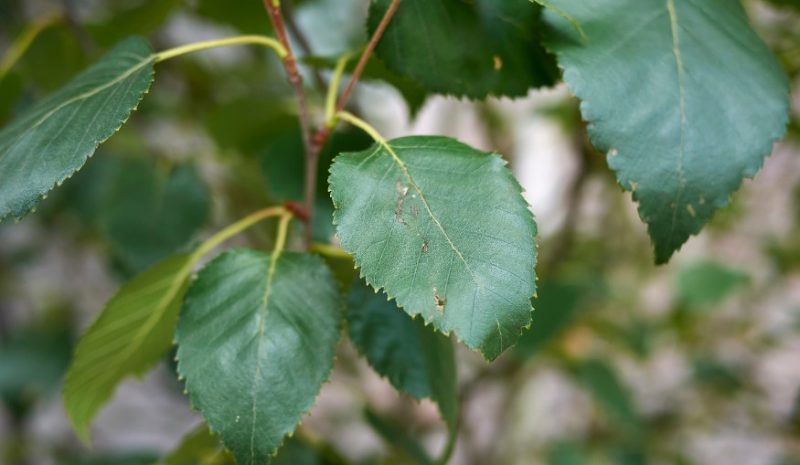
Downy Birch (Betula pubescens) is an exceptionally cold-hardy tree that thrives in USDA Zone 2, reaching heights of up to 60 feet. This edible tree’s inner bark has historically been consumed in northern climates, ground into flour, and used to make bread, a practice that continues today. Medicinally, it has served as an astringent, anti-inflammatory, and diuretic.
Downy Birch grows quickly and features a shallow root system, so it’s essential to plant it in a permanent location as it dislikes disturbances. It prefers moist, well-drained, acidic soils but does not tolerate compacted or consistently wet conditions. This species has been introduced in various US states and Canadian provinces.
Identifying Downy Birch is easy due to its dark reddish-brown bark that matures to light reddish-brown or grayish-white, sometimes exfoliating in thin sheets. The twigs are covered with short bristly hairs and lack a wintergreen scent. Leaves are ovate or rhombic-ovate, with rounded bases, acute tips, and serrated margins. The lower surfaces are sparsely pubescent. The infructescences are cylindrical, pendulous, and shatter with fruits in late fall.
Downy Birch is often confused with Silver Birch, which has distinctly creamy-white bark and different leaf characteristics. Other common names include Hairy Birch, Moor Birch, and European White Birch. This tree is native to a wide area from Iceland and the UK to northern and central Europe and Asia, reaching USDA Zones 2 to 9, with an average height of 30 to 65 feet and a spread of 20 to 35 feet at maturity.
Paper Birch
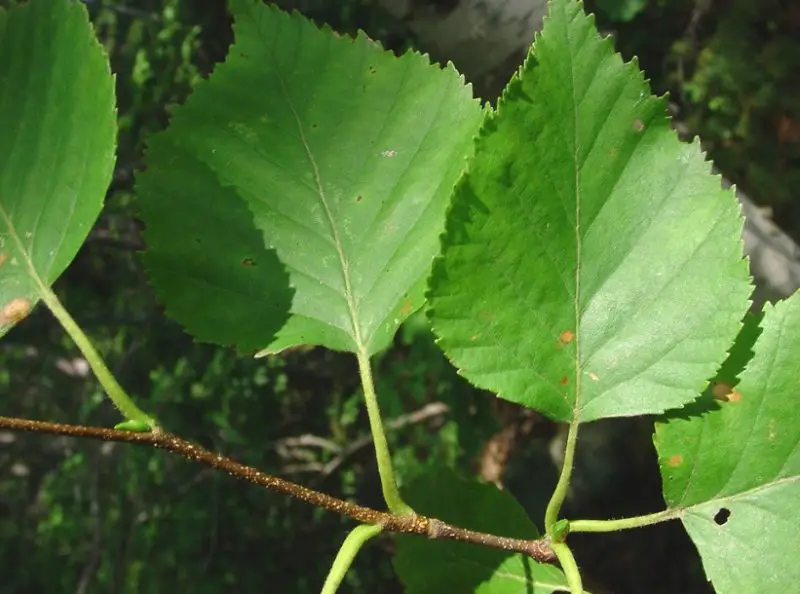
The Paper Birch (Betula papyrifera) is an iconic tree native to Northern North America, known for its striking white, papery bark that peels in thin strips. Valued by Native Americans and early settlers for its versatile bark, which was used for crafting canoes and baskets, this hardy tree thrives in cold climates, growing rapidly to heights of 45 to 70 feet and sometimes reaching up to 100 feet.
The tree’s leaves are ovate with finely serrated edges, turning a vivid yellow in the fall, creating a stunning contrast with its white bark. While it typically lives around 100 years, some exceptional specimens can reach 200 years. Best suited for moist, loamy soils with full sun or partial shade, the Paper Birch is resistant to some pests, like the bronze birch borer. Its unique bark and form make it a beloved and recognizable part of the Northern American landscape.
River Birch
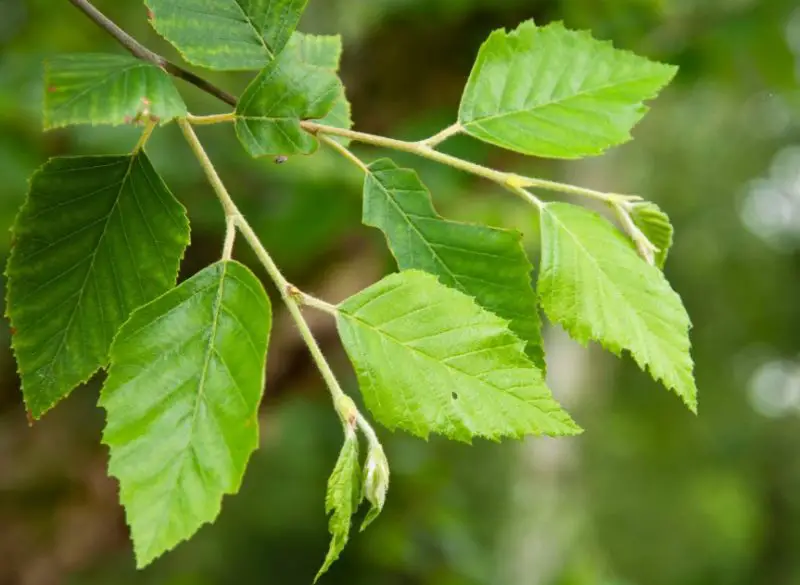
The River Birch (Betula nigra) is a popular tree for landscaping, valued for its rapid growth and distinctive bark. It can be grown as a single- or multi-trunk tree, forming a beautiful, rounded canopy. Its bark starts as salmon-pink to reddish-brown, exfoliating in thick, shaggy layers that reveal lighter inner bark, providing year-round visual interest.
Thriving in moist soils and preferring full sun to partial shade, the River Birch is well-suited for wet areas like riverbanks and swamps but can also tolerate drought. It is heat-tolerant and resistant to the bronze birch borer, though it prefers acidic over alkaline soils. In fall, its dark green leaves turn a soft yellow, enhancing seasonal appeal.
Easily identified by its shaggy bark and rhombic-ovate leaves, River Birch can grow up to 80 feet tall. It’s often confused with Paper Birch and Silver Birch, which have different bark and leaf characteristics. Its adaptability and striking appearance make it a beloved choice in various landscapes.
Cherry Birch
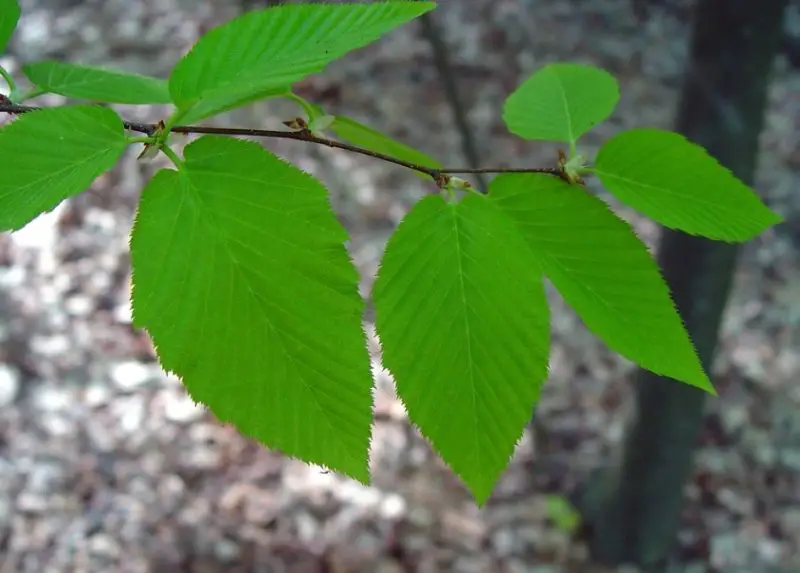
The Cherry Birch (Betula lenta), also known as Sweet Birch or Black Birch, is a majestic tree renowned for its smooth, shiny, reddish-brown bark that resembles cherry bark, even as it matures into irregular, scaly plates. This large tree enhances landscapes, especially in the fall when its leaves turn a vibrant golden-yellow, adding seasonal beauty.
Wildlife is drawn to its fruits in the form of catkins, attracting deer, moose, rabbits, and various bird species. Additionally, its flowers attract butterflies in the spring, making it both aesthetically pleasing and ecologically valuable. Resilient against the bronze birch borer, Cherry Birch thrives in full sun to partial shade and prefers moist, well-drained, slightly acidic loamy soils, though it can tolerate sandy or rocky conditions.
Its distinct wintergreen scent from crushed twigs and the ability to produce birch beer from its sap further set it apart. Growing to 60 to 70 feet tall, with a spread of 35 to 60 feet, it is well-suited for open spaces across USDA Zones 3 to 8.
Virginia Roundleaf Birch
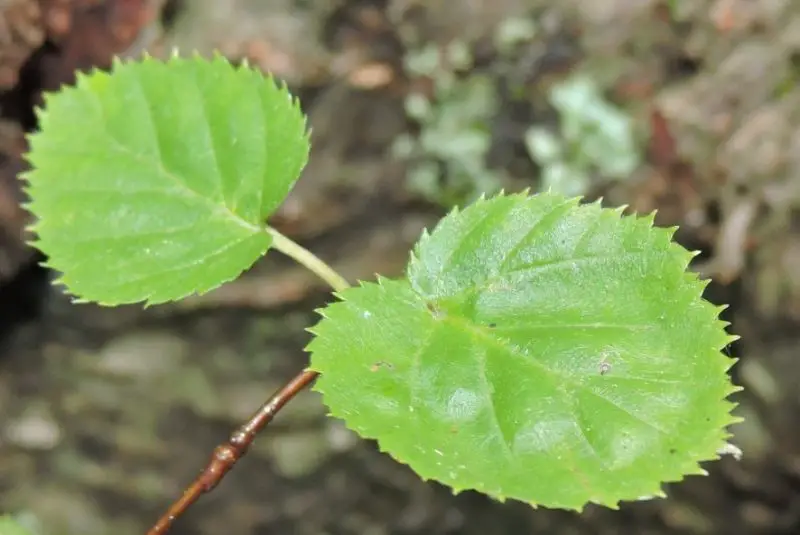
The Virginia Roundleaf Birch (Betula lenta f. uber) is a rare variant of the Cherry Birch, notable for its nearly round leaves, which distinguish it from the typical ovate or oblong leaves of other birch species. This unique characteristic, coupled with its limited distribution, has led to its recognition as a distinct form, although it is sometimes classified as Betula uber.
Growing to a moderate height of 20 to 35 feet, with some specimens reaching up to 50 feet, this slender tree has a short lifespan of about 50 years. Its bark is dark brown to black, smooth when young, and does not exfoliate as dramatically as the Cherry Birch. Listed as critically endangered by the IUCN, fewer than 1,000 individuals remain in the wild, concentrated in Smyth County, Virginia.
The Virginia Roundleaf Birch prefers moist, well-drained soils and partial shade in USDA Zones 5 to 7. Its unique, almost circular leaves and rarity make it a conservation priority.
Himalayan Birch
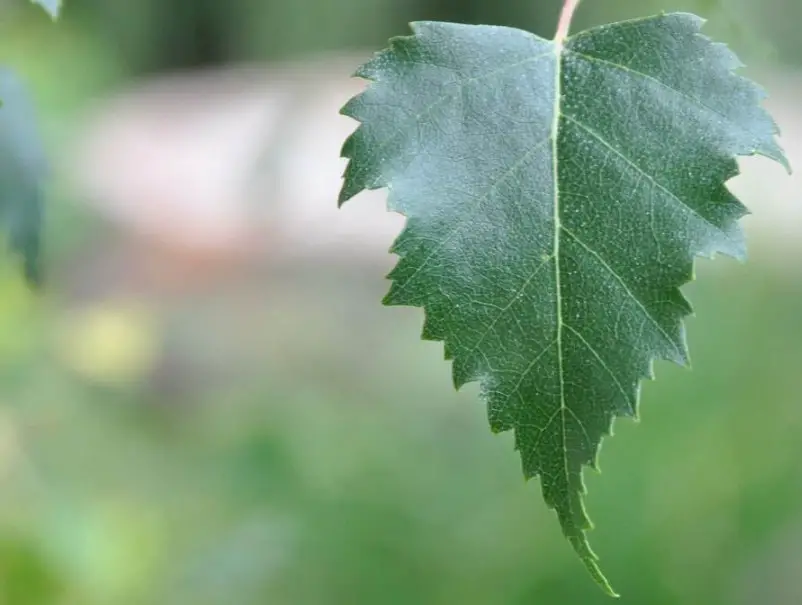
Himalayan Birch (Betula utilis) is a medium-sized tree characterized by its open pyramidal form, native to the temperate montane forests of the Himalayan Mountains. The tree features yellow-green to green leaves that transform into a vibrant golden-yellow in the fall, while its distinctive peeling bark provides winter interest to the landscape. Himalayan Birch thrives in medium to wet, well-drained sandy or rocky loams, preferring full sun to partial shade. It performs best in cooler temperate climates (USDA zones 5 and 6) with snow cover during winter, and in hotter, humid summers, it benefits from afternoon shade and mulch to keep its roots cool and moist.
Identifying features include dark reddish-brown bark that exfoliates in thin flakes, hairless red-brown branches, and densely resinous twigs. The leaves are ovate to oblong, with irregularly serrate margins and pubescent lower surfaces. Himalayan Birch is often confused with Silver Birch and Paper Birch due to similarities in bark and leaf characteristics. Common names include White-Barked Himalayan Birch and Bhojpatra. It typically reaches 30 to 40 feet in height and spreads 15 to 30 feet.
Jacquemontii Himalayan Birch

Jacquemontii Himalayan Birch (Betula utilis var. jacquemontii) is a striking botanical variant of the Himalayan Birch, celebrated for its stunningly white papery bark, which many consider the whitest among birches. This medium-sized tree typically features a single trunk with a graceful pyramidal form and is particularly admired for its vibrant yellow foliage in the fall. However, it is vulnerable to the bronze birch borer, so it’s essential to assess local pest conditions before planting.
Thriving best in cooler climates, the Jacquemontii Himalayan Birch prefers consistently moist but well-drained loamy, sandy, or clay soils and is best situated in full sun, although it can tolerate some light shade. The leaves are more or less ovate, characterized by 7 to 9 pairs of lateral veins, rounded bases, and acuminate tips, distinguishing it from its Himalayan counterpart. This elegant tree, also known as White-Barked Himalayan Birch, typically reaches heights of 30 to 50 feet with a spread of 15 to 30 feet, thriving in USDA zones 4 to 7.
Chinese Red Birch

Chinese Red Birch (Betula utilis ssp. albosinensis) is a striking tree often recognized for its beautiful honey, cinnamon, or maroon peeling bark, which makes it an appealing specimen in gardens or groves. This subspecies of Himalayan Birch thrives in a variety of conditions, demonstrating resilience even in drought. It prefers moist, well-drained soils and grows well in full sun to partial shade. In the fall, its leaves transform into a stunning shade of yellow, adding seasonal interest.
This tree has earned the Royal Horticultural Society Award of Garden Merit for its ornamental qualities. Identifying features include its tall stature, orange-red shiny bark that exfoliates in papery flakes, and reddish-brown hairless twigs. The leaves are ovate to ovate-oblong, with acuminate tips and irregularly serrated margins. Chinese Red Birch is often confused with Himalayan Birch, which has darker bark and slightly different leaf characteristics. Native to central and western China, it typically reaches heights of 30 to 50 feet with a spread of 20 to 30 feet.
Japanese White Birch
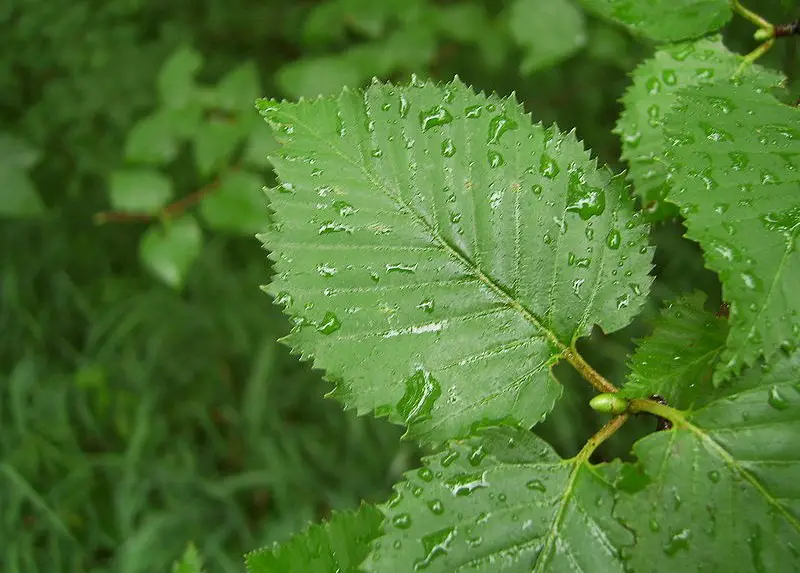
Japanese White Birch (Betula platyphylla ssp. mandshurica) is a medium-to-tall tree renowned for its bright white bark and gracefully spreading branches that end in drooping twigs. Thriving in cooler climates, it prefers full sun but can tolerate partial shade. This tree is adaptable to various soil types, including sandy or rocky loams, as long as the soil remains consistently moist and well-drained. However, in warmer climates, it is more susceptible to birch borers.
The classification of this species is somewhat ambiguous; it is often referred to as Betula platyphylla var. japonica and is sometimes included within the Silver Birch (Betula pendula) taxon. Identifying features include grayish-white, exfoliating bark and twigs that are brown and sparsely resinous glandular. Leaves are deltoid to broadly ovate, with serrated margins and 5 to 9 lateral veins. Incontescences are pendulous and oblong, contributing to their decorative appeal. Native to Japan, Korea, and parts of Siberia, it typically reaches heights of 30 to 50 feet and spreads 15 to 25 feet.
Water Birch
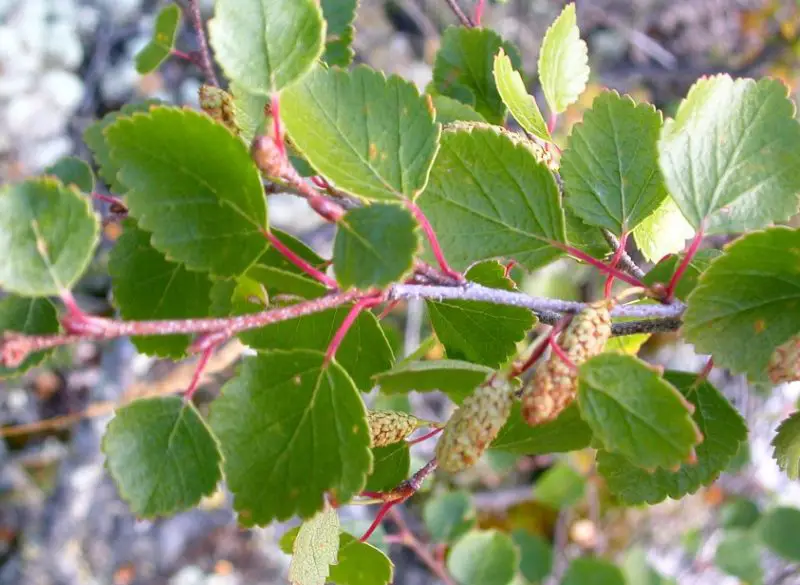
Water Birch (Betula occidentalis) is a versatile tree that can grow as a shrub or develop into a medium-sized tree, depending on its environment. Characterized by its smooth, dark red-brown to nearly black bark, it differs from other birch species as it does not peel. This tree is vital to the ecosystem, serving as a crucial food source and material for the North American beaver.
Water Birch thrives best in naturally soggy, waterlogged soils and prefers full sun to partial shade. The leaves are broadly ovate to rhombic-ovate, measuring between 0.4 and 2.3 inches long, with 2 to 6 pairs of lateral veins and serrated margins. Its infructescences are erect to nearly pendulous, cylindrical in shape, and shatter with fruits in the fall.
This species is often confused with River Birch due to its common name, but it is distinguished by its non-exfoliating bark. Native to western North America, Water Birch typically reaches heights of 15 to 40 feet, with a spread of 10 to 30 feet.
Erman’s Birch
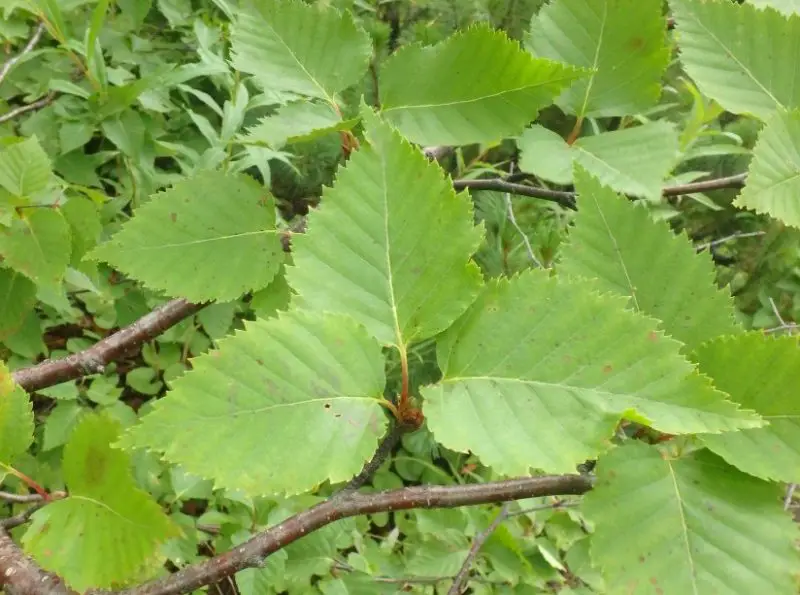
Erman’s Birch (Betula ermanii) is a sought-after shade tree known for its lush, dense foliage. Frequently planted in parks, borders, and gardens, it serves as an attractive specimen tree or can be used in groves for woodland gardens. This tall, variable species features creamy-white, peeling bark and glossy green leaves that turn a vibrant golden-yellow in the fall.
Highly adaptable, Erman’s Birch thrives in most well-drained, moist soil types and prefers full sun to partial shade. Its identifying characteristics include grayish-white bark that exfoliates in thin sheets and red-brown, hairless branches. The leaves are ovate or broadly ovate, measuring 0.8 to 2.8 inches long with 8 to 12 lateral veins and irregularly serrate margins. The infructescences are typically ovoid or oblong and often nearly sessile.
Often confused with Japanese White Birch, Erman’s Birch is native to Northeast China, Korea, Japan, and the Russian Far East, reaching heights of 30 to 40 feet with a spread of 20 to 40 feet.
Gray Birch
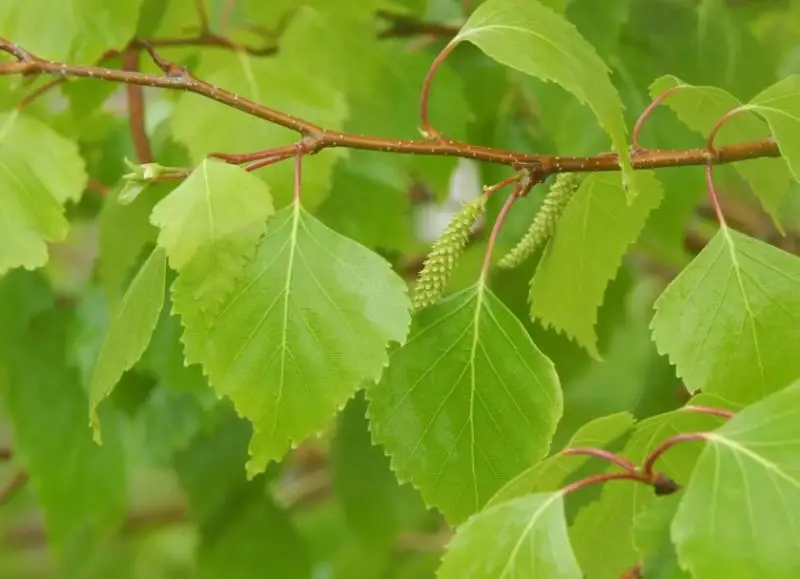
Gray Birch (Betula populifolia) is a prevalent species characterized by its multi-trunked form, making it ideal for smaller yards as a large shrub or small tree. Its wood is favored by craftsmen for its versatility and malleability. While it can tolerate poor and drier soils, it thrives best in medium- to wet, well-drained sandy or rocky organic loams with a preference for acidic conditions. This short-lived, cold-hardy tree benefits from mulching around the root zone in warmer summer areas to keep its roots cool.
Gray Birch is easily identifiable by its narrow, columnar shape and rough-warty twigs. Its bark is chalky white and non-exfoliating, featuring dark chevron patches below branch bases. The glossy green leaves are deltoid, measuring 2 to 3 inches long with doubly serrated margins. Infructescences are pendulous and mature in late summer. Often mistaken for Paper Birch or Silver Birch, it is native to northeastern North America and reaches heights of 20 to 40 feet with a spread of 10 to 20 feet.
Curly Birch

Curly Birch (Betula pendula ssp. pendula or var. carelica) is a distinctive genetic variant of Silver Birch, known for its unique twisted and bushy growth habit. This intriguing tree exhibits a genetic mutation that causes its branches to curl toward the trunk, resulting in striking curly grains in the wood. These grains are highly sought after for crafting specialty wood products such as small boxes, knife handles, picture frames, bowls, and pens, making Curly Birch a favorite among artisans and woodworkers.
Although it is commonly referred to as Betula pendula var. carelica, plant authorities have reclassified it as Betula pendula ssp. pendula. This tree typically grows to a height of 30 to 50 feet with a spread of 20 to 30 feet, making it suitable for various landscape settings. Curly Birch thrives in well-drained, moist soils and prefers full sun to partial shade. Its USDA growing zones are 3 to 6, allowing it to adapt to a range of climates. Overall, Curly Birch stands out not only for its beauty but also for the high quality of its wood.






